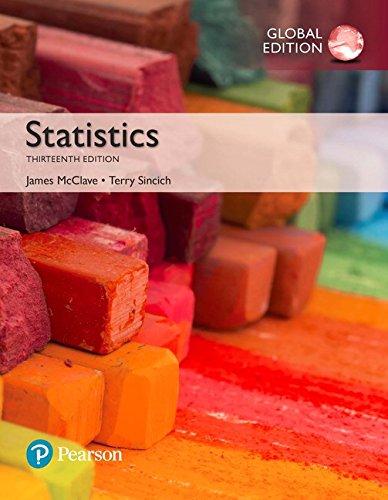Reliability of a robotic device. The reliability of a piece of equipment is frequently defined to be
Question:
Reliability of a robotic device. The reliability of a piece of equipment is frequently defined to be the probability p that the equipment performs its intended function successfully for a given period under specific conditions (Render and Heizer, Principles of Operations Management, 1995).
Because p varies from one point in time to another, some reliability analysts treat p as if it were a random variable.
Suppose an analyst characterizes the uncertainty about the reliability of a particular robotic device used in an automobile assembly line by means of the following distribution:
f1p2 = e 1 0 … p … 1 0 otherwise
a. Graph the analyst’s probability distribution for p.
b. Find the mean and variance of p.
c. According to the analyst’s probability distribution for p, what is the probability that p is greater than .95? Less than .95?
d. Suppose the analyst receives the additional information that p is definitely between .90 and .95, but that there is complete uncertainty about where it lies between these values. Describe the probability distribution the analyst should now use to describe p.
Step by Step Answer:





